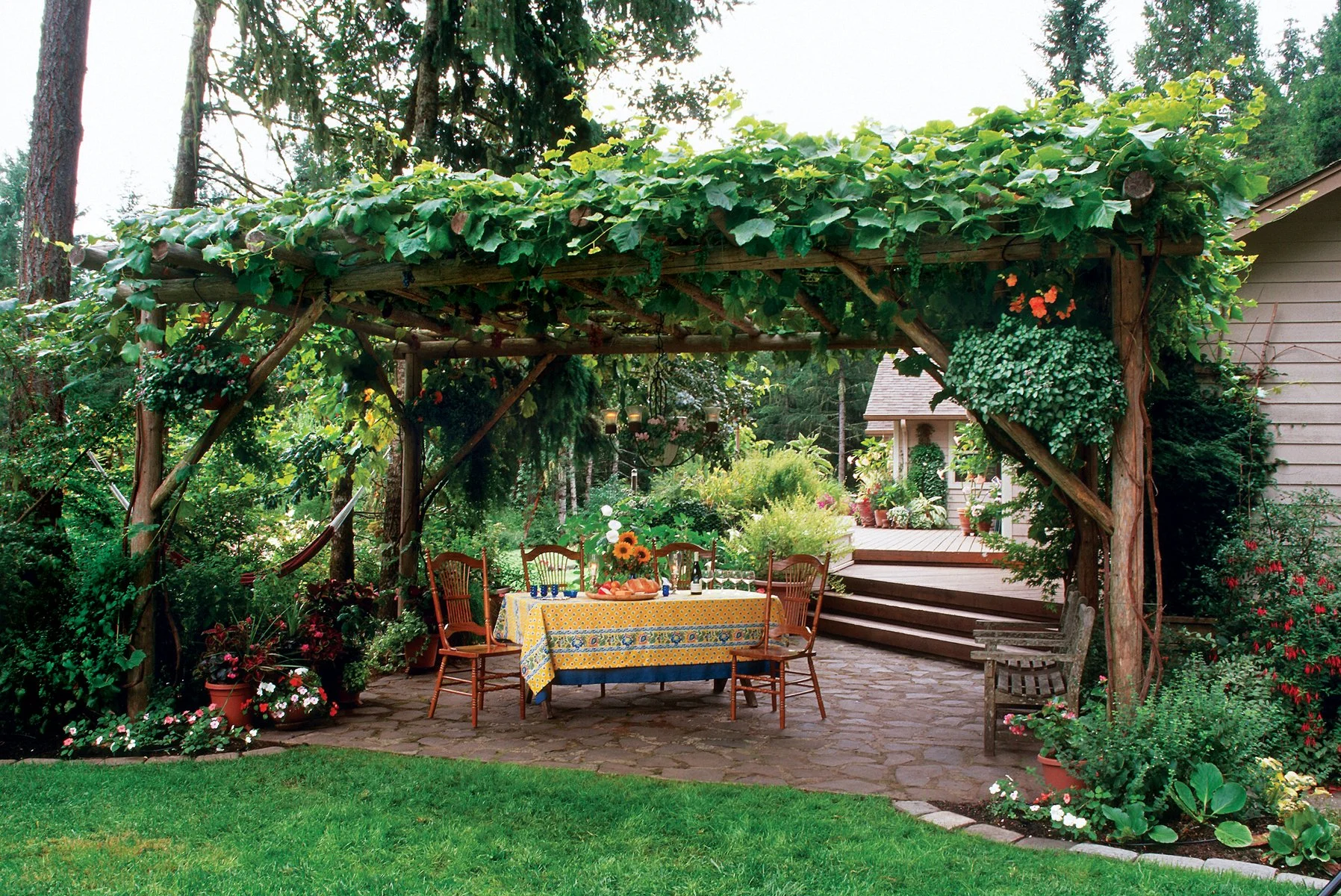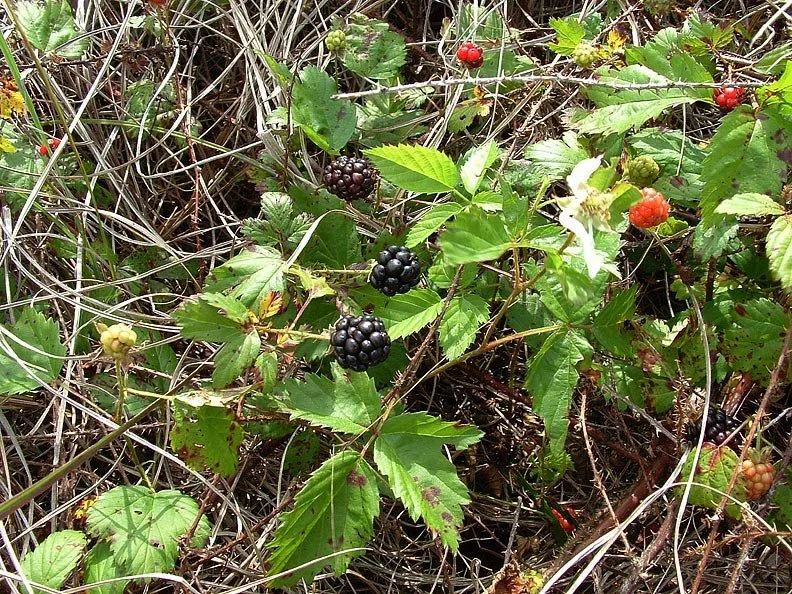HOW TO CREATIVELY DINE IN YOUR YARD
Image by Rosalind Creasy courtesy of Mother Earth News
Have you ever wanted to walk outside and find berries or veggies just growing in your landscape, ripe for the absolute freshest picking? It can be wildly easy if you plan right and have the right plant in the right place!
The red mulberry tree brings ample shade and attracts wildlife with its fruit. The small, sweet fruits are a favorite food for most birds.
I walk along my front and back fences finding pints upon pints of wild blackberries and mullberries this time of year, most of which I never planted in the first place and most likely to have been placed by birds taking a break to sing a song.
Rubus trivialis (Southern Dewberry) is a native edible found in Florida landscapes
The genus Rubus is another blanket term for the group of blackberries, which grow in a thicket and can be managed with lattice or fencing and occasional pruning or trimming. The leaves are beneficial for some wildlife and caterpillars, as long as it's controlled and out of the way, it is one of my favorite natural go-to's.
Generally, rabbiteye blueberries grow well in areas of Florida that have winters as cold as or colder than winters in Ocala.
Keeping with berries in mind, blueberries are exceptional landscape plants that can thrive in acidic soil with just 5 hours of full sun. It's a good practice when planting to utilize some acidic peat moss and pine bark mulch. For North Florida, you can't go wrong with the Rabbiteye cultivar. It's easier to grow here than the Southern Highbush cultivars, albeit there are a few that do well here like Sweetcrisp and Springhigh. Rabbiteyes are drought tolerant and can withstand the erratic wild North Florida weather fairly well.
Society garlic is also great for growing in containers, however it will still need bright sunlight for best results.
If you're like me and enjoy garlic, a really pretty and edible landscape plant to install is Society Garlic. The flowers are like little violet fireworks and the scent isn't too noticeable until you get close. A cool part about the scent and the flowers is that during the day, bees & butterflies will polinate, while at night, moths find their way to the pollination station while the scent of the garlic is a little more subdued. The name itself comes from when the Dutch would have social events in South Africa where it's native and want a more calm flavor than traditional garlic. The entirety of the plant is edible, though I'm personally a fan of utilizing the green leaves and flowers for a light peppery flavor in dishes.
In North Florida, sweet potatoes are planted during the warmer months of March through June.
Hitting the ground, let's take a look at sweet potatoes. The whole plant is edible and grows in a not-too-fast growing vine which can be trained on a lattice or led across the ground. If in the latter mood and space, put a scoop of dirt on the spot where the leaf shoots from the main vine, leaving the leaf uncovered, and in a few days with watering, there will be a tiny root that is the beginning of another sweet potato. The leaves make for an excellent green filler for salad, and the potatoes themselves will tell you they're ready when a wider reddish end starts to stick out of the ground where the vine attaches. Make sure you have a dedicated area for these; sometimes you don't get all of the potatoes out of the ground and they will regrow (I'm a fan of having a spot where they come back every year).
Beautyberry fruits are edible to humans, but have an astringent quality and not much flavor, making them somewhat unpalatable raw. Beautyberry jelly, however, is quite tasty. The leaves contain a chemical that may repel mosquitoes.
One that you've likely come across on hikes in the woods or along a fencerow alike is the beautyberry. It grows up to eight feet tall & wide and produces small clusters of purple berries that are edible. One can make jams, jellies, syrups or juices out of them with a little sweetener, and birds will be attracted to the berries as well, so it's a nice plant to have to bring wildlife into the area. The berries will stay on the bush beyond the leaves, and trimming can keep the bush compact, just do so before it flowers.
Florida's Incredible Wild Edibles written by Richard Deuerling & Peggy Lantz is a nice resource for more information
Other edible plants that may be growing in your yard could be spiderwort, oxalis, dollar weed, bettony, clover, and day flower, to name a few. Always wash your outdoor findings and avoid foraging from near busy roadways. Lastly, whatever you do, do not, absolutely don't, plant mint in the ground unless you'd like a new ground cover or really enjoy mint tea. UF/IFAS Gardening Solutions has some great information about Florida’s edible native plants as well on their website.
More questions? Shoot an email to us at letsgrow@waccapilatka.com or drop us a message on our socials. When it comes to plants, we've got the ground covered.









